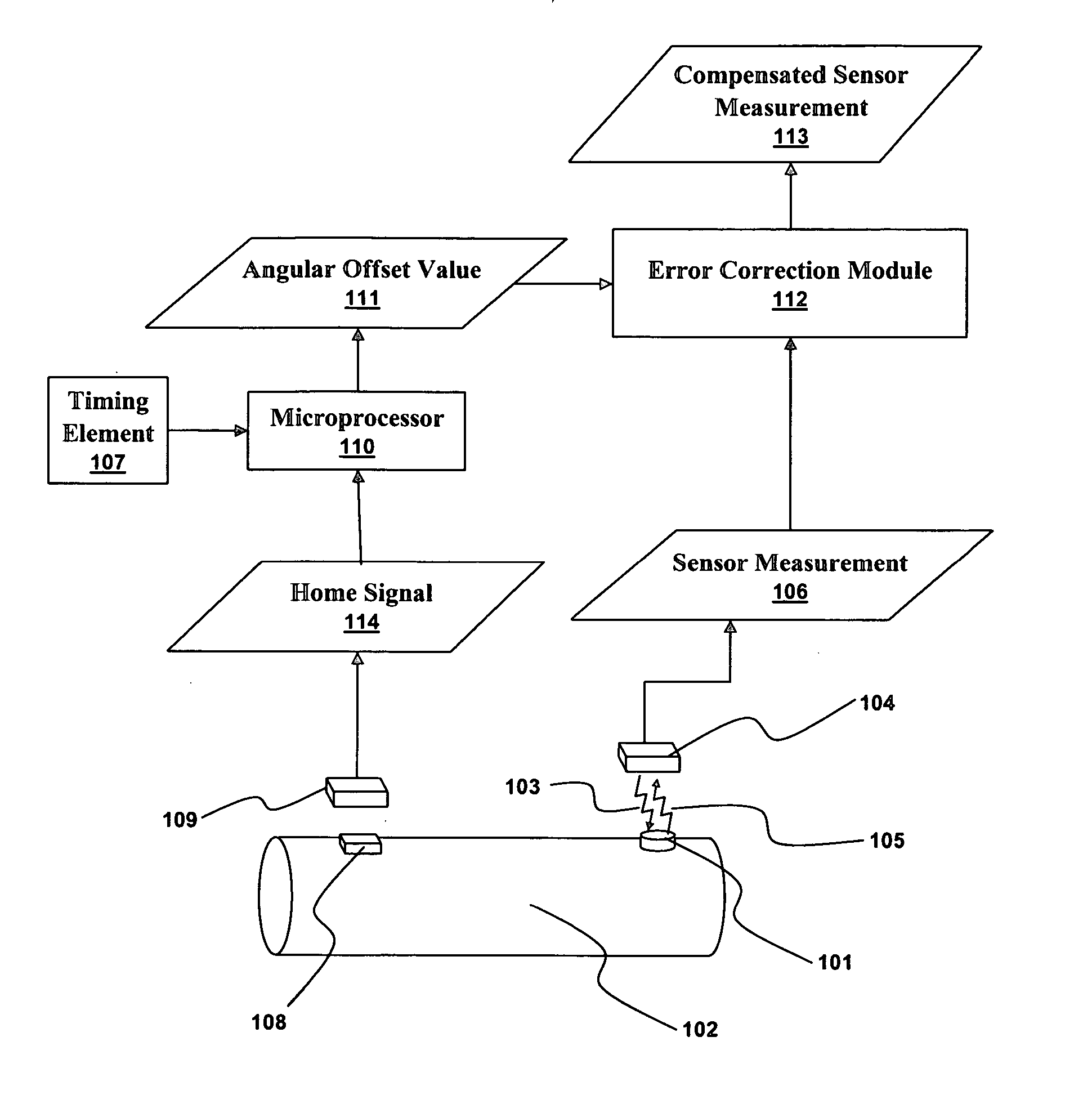Error compensation for a wireless sensor using a rotating microstrip coupler to stimulate and interrogate a saw device
- Summary
- Abstract
- Description
- Claims
- Application Information
AI Technical Summary
Benefits of technology
Problems solved by technology
Method used
Image
Examples
Embodiment Construction
[0028] The particular values and configurations discussed in these non-limiting examples can be varied and are cited merely to illustrate at least one embodiment and are not intended to limit the scope thereof. In general, the figures are not to scale.
[0029]FIG. 1 illustrates a system producing a compensated sensor measurement 113 in accordance with an embodiment. A passive wireless sensor 101 is attached to a rotating element 102. A stationary circuit 104 creates an electromagnetic field 103 that energizes the passive wireless sensor 101. Here, the electromagnetic field 103 is shown as a ragged arrow to indicate the sensor it is energizing. In practice, electromagnetic fields a rarely highly directional. The passive wireless sensor 101, once energized, produces a sensor signal 105 that is transmitted back to the stationary circuit 104. The sensor signal 105 contains a sensor measurement 106. As discussed above, a read error based on the angular offset between the passive wireless ...
PUM
 Login to View More
Login to View More Abstract
Description
Claims
Application Information
 Login to View More
Login to View More - R&D
- Intellectual Property
- Life Sciences
- Materials
- Tech Scout
- Unparalleled Data Quality
- Higher Quality Content
- 60% Fewer Hallucinations
Browse by: Latest US Patents, China's latest patents, Technical Efficacy Thesaurus, Application Domain, Technology Topic, Popular Technical Reports.
© 2025 PatSnap. All rights reserved.Legal|Privacy policy|Modern Slavery Act Transparency Statement|Sitemap|About US| Contact US: help@patsnap.com



